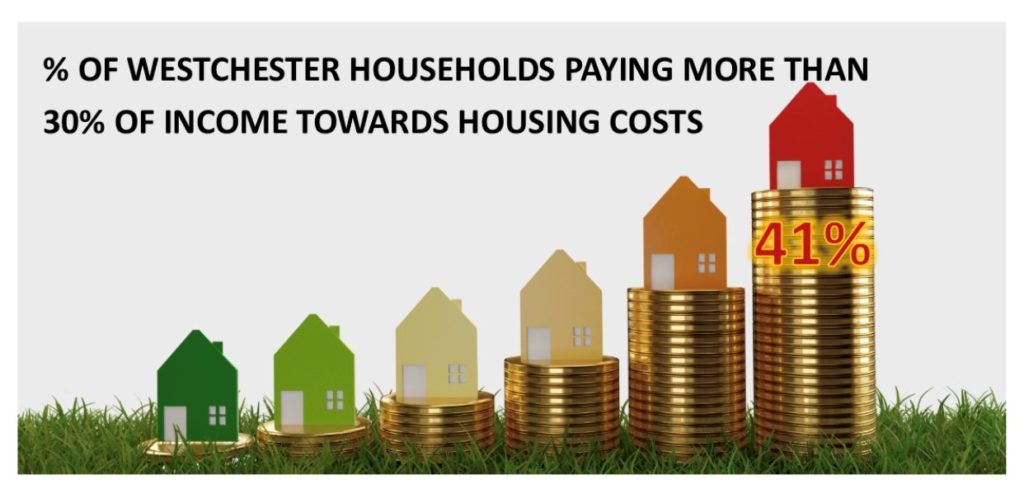Westchester County Housing Needs Assessment Identifies Serious Gap in Affordable Housing
By: Joseph Czajka, Senior Vice President for Research, Development and Community Planning and Executive Director, Center for Housing Solutions and Urban Initiatives at Hudson Valley Pattern for Progress
More than 41% of the households in Westchester pay more than 30% of their income on housing costs, according to the assessment.

On the heels of the release of the Westchester County Housing Needs Assessment, in which Pattern for Progress provided more than 650 pages of research, data, analysis and recommendations, it is critical to point to the relationship between economic development and housing. The Pattern report shows the need for over 82,000 units of affordable housing, with a net demand of 11,700 units across the entire county.
The creation of housing, whether new single-family homes, multi-family complexes or home improvement, generates local jobs and provides a positive economic benefit in the community. The development of new housing stimulates economic activity in both the short and long term, and it mitigates impediments to economic development projects by strengthening the infrastructure that builds upon the foundation to bolster regional growth.
Housing development creates a variety of jobs from the design stage through occupancy and beyond. The pre-development stages of housing consists of jobs in architecture, real estate, engineering, market analysis, and environmental and legal services. The construction of housing produces employment in the building trades, material suppliers, real estate, attorneys and lending. Post-construction, there are full-time jobs created in property management and maintenance in addition to a cadre of employment within the local business community that is needed to support the developments and the residents. These include local shops, plumbers, electricians, food services, utilities, pharmacies and more. Once occupied, residents will likely spend money in the local economy. New housing has a lasting positive impact on a community for residents and businesses. A variety of housing options also increases our competitive advantage when looking to retain the existing businesses and attracting new companies by providing a critical element for employees – housing.
When addressing housing in most communities, the conversation is typically centered on the cost to the taxpayer, as opposed to the fiscal and economic benefits of supporting and developing housing. The argument will likely point to the impact on the schools, policing, fire protection, social services and infrastructure. Very seldom does the conversation include the impact that housing has on economic development and the symbiotic relationship between the two elements.
In terms of affordable housing construction, these developments leverage substantial public and private investment and support the redevelopment, stabilization and revitalization of urban centers and neighborhoods. The creation of affordable multi-family housing developments improves the socio-economic stability and tax base of a community. Residents who rent an affordable housing unit are no longer cost burdened, paying more than 30% of their income toward housing, which then allows for increased expenditures within the local economy on goods and services. By comparison, right now, the study found that more than 41% of households in Westchester pay more than 30% of their income on housing costs.
If a community, a county and the region will be successful in its economic development efforts, then a wide range of housing options must be made available to households at various income levels.
For more information and to access full report please see link below:
Westchester County Housing Needs Assessment




